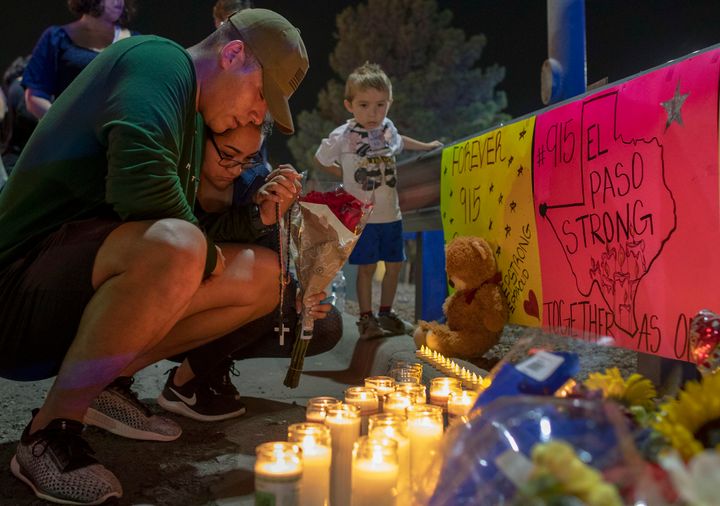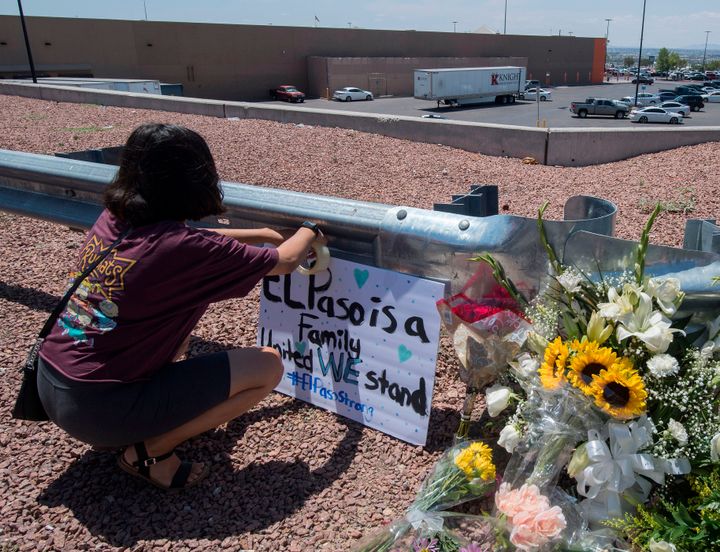The deadly mass shootings in the US this weekend have sparked a renewed debate about how the media should cover the self-penned manifestos that are increasingly becoming a feature of far-right terror.
Police said the attack that killed 22 people at a crowded El Paso department store in Texas will be handled as a domestic terrorism case, as it emerged the suspect Patrick Crusius “came to kill hispanics”.
A three-page document believed to be authored by 21-year-old was published on 8chan – a notorious online message board where bigotry is encouraged and celebrated – shortly before the attack.
The text praised Brenton Tarrant, the Australian man who live-streamed his brutal attack at mosques in Christchurch, New Zealand, as a source of inspiration. Tarrant killed 51 worshippers in his murderous rampage.
In March, the MailOnline was criticised for choosing to publish Tarrant’s own document – his so-called manifesto – in full. Others chose to link to it, or heavily quote from it.
So as these written justifications, often published online ahead of attacks, seem to have become de rigueur, how can the media report on them without amplifying their extremist views?

Famously, Anders Behring Breivik – a far-right terrorist who killed 69 young participants of a Workers’ Youth League summer camp on the island of Utøya – penned a 1,500-word “manifesto” chillingly detailing his planning for the attack. It was later said to have closely copied from “Unabomber” Ted Kaczynski’s own manifesto.
Charlie Beckett, director of Polis, in the department of media and communications at the London School of Economics, said the publications have a responsibility not to fan the flames of terrorism with coverage.
“There is very strong research evidence which shows how these things trigger other people to commit similar acts,” he said.
Responsible reporting is so important because terrorism of this kind wouldn’t exist but for the media, he said.
“They only do it because they want to have an effect and that effect is partly the awful wreckage of people’s lives but even that is done for media effect, they want people to talk about them. They want people to be frightened.
“If there was a media black out somehow, they would stop. They wouldn’t do it anymore. We know that is not possible but it’s about how we choose to report it.”
Beckett said far-right terrorists are savvy about social media and how they can gain influence in their own communities of people with similar views.
Tarrant’s so-called manifesto included examples of “shitposting”, which is an internet slang term describing a range of user misbehaviours on forums and message boards that are intended to derail a conversation.
Beckett said this and the desire to be made a meme, as expressed by Tarrant, is typical.
He said: “What’s interesting is the shitposting and gamification of their violence ... they are really conscious of the fact they can trigger other people ... They are not trying to win an election, they are trying to disrupt and frighten people.”

Beckett suggested one way for reporters to approach the issue is to ask the question: “Would the perpetrator be pleased with this publicity? If you ask yourself that and think what little thing could be done to make it less useful to that person.
“It may be to not give it as much publicity. It may be to contextualise. It may be to write about the victims instead of write about [the attacker].”
Nick Ryan, spokesman for Hope Not Hate agrees that the media has a big role to play.
Referring to advice on US site Journalist’s Resource, he said more attention is being given to how to report on the far-right but the media still had a long way to go.

He said: “People are starting to pick it up especially after Christchurch when the MailOnline had the terrorist’s manifesto, which essentially amplified his message ... Lessons are being learned but slowly.”
He said authorities, politicians and the media are still playing catch up about far-right movements and how they operate, especially in relation to media coverage.
Pan-European far right group Generation Identity organised a stunt to get media attention in summer 2017 when they launched a campaign this summer to disrupt vessels saving refugees in the Mediterranean, after successfully intercepting a rescue mission.
The fact the media went to cover it meant journalists fell into the trap of interviewing the group “on their own terms”, Ryan said.
“Some people have suggested we should have a strategic silence around some of the white supremacists but obviously when there is a killing or mass murder or terrorist attack, journalists can’t not report that – but they don’t have to slavishly report every demonstration those groups hold.”
Ryan said: “It’s just about being responsible and not being an enabler of that hate, which contributes to a further poisoning of what’s already in the UK and US quite a tribal society.”
